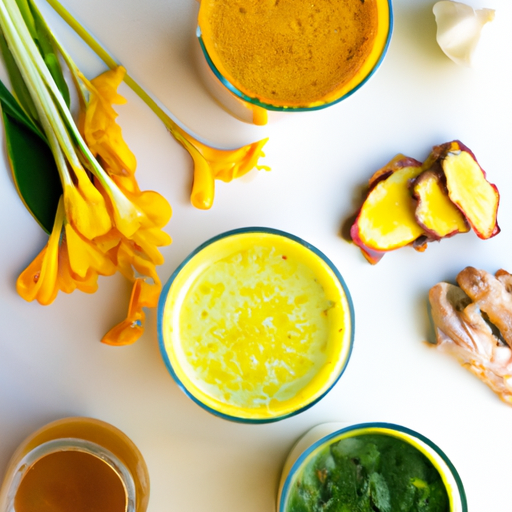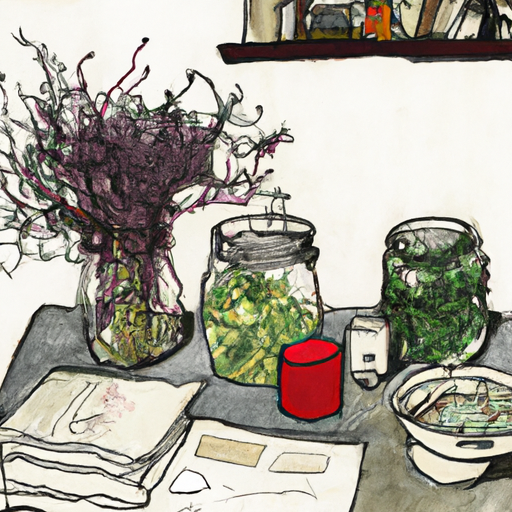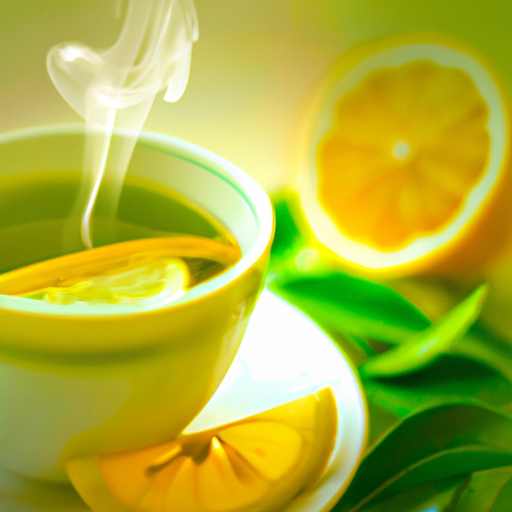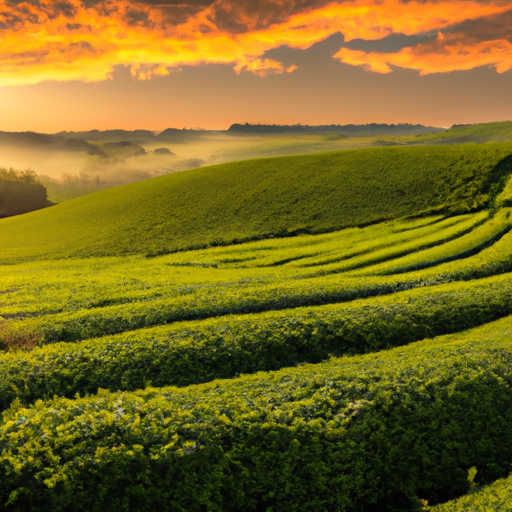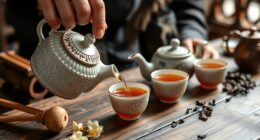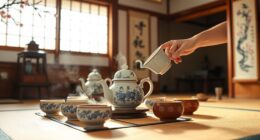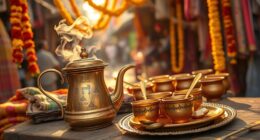Imagine stepping into a world where every sip of tea transports you to a land of rich flavors and captivating aromas. Welcome to India, a country renowned for its diverse tea regions, each offering a unique and enchanting experience.
As a tea enthusiast, I am excited to take you on a journey through India’s tea landscape, from the robust and malty Assam to the delicate and floral Darjeeling. But let’s not stop there; there are other regions like Nilgiri, Sikkim, Karnataka, Kangra, Munnar, Dooars, and Terai that also contribute their distinct flavors to India’s tea tapestry.
Gone are the days when Indian tea was limited to strong Assam in tea bags. Now, artisanal specialty teas are flourishing, inviting us to indulge in a world of tea like never before.
So, join me as we embark on this exploration of India’s diverse tea regions, where every cup promises to be a delightful adventure.
Key Takeaways
- Assam is the largest tea producing region in India, known for its strong and malty black tea.
- Darjeeling tea, produced in West Bengal, is renowned for its light and floral character.
- Nilgiri is the third largest tea producing area in India, with lighter flavor and flowery notes.
- Indian tea is often divided into two generic groups – Assam and Darjeeling, but there are many other types of tea from different regions.
Assam Tea
I’ve learned that Assam is the largest tea producing region in India, and it’s known for its strong and malty black tea.
Assam tea production is a sight to behold, with vast tea gardens stretching as far as the eye can see. The region’s unique climate and fertile soil contribute to the distinctive flavor profiles of Assam teas.
The teas from this region are often bold, rich, and full-bodied, with a deep amber hue. They have a robust and malty flavor that’s invigorating and satisfying.
Assam teas are perfect for those who enjoy a strong cup of tea in the morning or throughout the day. Their unique character is a testament to the rich tea heritage of this incredible region.
Darjeeling Tea
Renowned for its delicate and floral character, Darjeeling tea is highly sought after by tea enthusiasts worldwide. This exquisite tea is produced in the picturesque region of Darjeeling in West Bengal, India. The unique flavor profile of Darjeeling tea is a result of the region’s high altitude, cool climate, and unique soil composition.
Darjeeling tea production is carefully monitored and regulated by the Darjeeling Tea Association, ensuring that only teas grown in the region can be labeled as ‘Darjeeling.’ The tea leaves are hand-plucked and processed using traditional methods, further enhancing the tea’s quality and flavor.
When brewed, Darjeeling tea offers a light and golden liquor with a complex taste that combines floral, muscatel, and fruity notes. Its distinct and nuanced flavor makes it a perfect choice for both black tea connoisseurs and those new to tea exploration.
Darjeeling tea’s exquisite flavor and the region’s rich tea heritage make it a must-try for any tea lover.
Other Tea Regions
Little did I know that besides Assam and Darjeeling, India has a plethora of tea regions waiting to be discovered. In the Nilgiri region, I was captivated by the unique flavors of the tea. Its lighter taste and flowery notes added a delightful twist to my tea-drinking experience. Similarly, Sikkim teas, with their appearance and flavor resembling Darjeeling teas, offered a charming and distinct character.
Moving on to the lesser-known tea regions, I was pleasantly surprised by the hidden gems of Karnataka and Himachal Pradesh. Karnataka’s Kelagur tea, in particular, caught my attention with its rich flavor and aroma. On the other hand, the tea from Kangra in Himachal Pradesh, with its Darjeeling-like essence but stronger taste, left a lasting impression on my palate.
Exploring these lesser-known regions has opened my eyes to the vast diversity of Indian tea. Each region holds its own charm and unique flavors, waiting to be savored by tea enthusiasts like myself.
Frequently Asked Questions
How has the British influence impacted the tea production in Assam and Darjeeling?
The British influence on tea production in Assam and Darjeeling has had a significant impact on tea cultivation in India. They were the first to plant tea in India, paving the way for the country to become the second largest tea producer in the world. The introduction of tea cultivation by the British brought about the establishment of tea gardens, which are now a prominent feature of the Indian tea industry. Assam, known for its strong and malty black tea, owes its tea production to the British, who recognized its potential as a tea-growing region. Similarly, Darjeeling tea, with its light and floral character, gained popularity under British influence. The British not only introduced tea cultivation techniques but also helped in developing the infrastructure necessary for tea production. Their influence can still be seen in the tea gardens, processing methods, and even the tea culture of these regions. Overall, the British influence has played a crucial role in shaping the tea production in Assam and Darjeeling, contributing to the rich and diverse tea heritage of India.
What are the different types of tea produced in the Nilgiri region?
The Nilgiri region in India produces a variety of teas, including the delicate and flowery Frost Tea, the medium-bodied Golden Orange Pekoe, and the strong and aromatic Green Tea. Tea tourism in Nilgiri offers a delightful journey through its picturesque tea gardens and rich tea heritage.
Are there any unique tea varieties or blends specific to Sikkim?
In Sikkim, tea cultivation in the Himalayas gives rise to unique tea varieties. Sikkim teas, resembling Darjeeling teas, offer a delicate and floral flavor, showcasing the region’s picturesque landscapes and the artistry of its tea artisans.
How does the flavor profile of Kelagur tea from Karnataka differ from other Indian teas?
Kelagur tea from Karnataka has a unique flavor profile with notes of earthiness and a subtle sweetness. Its production techniques involve carefully hand-picking the leaves and using traditional processing methods. Compared to other Indian teas, Kelagur tea offers a distinct cultural significance in Karnataka’s tea culture.
What is the significance of CTC style tea and how is it different from other tea processing methods?
CTC style tea, or Crush, Tear, Curl, is a common tea processing method in India. Unlike orthodox tea, CTC tea is made from broken leaves and undergoes a vigorous rolling process, resulting in a strong and robust flavor. CTC tea has several benefits, including a quicker brewing time and a strong, malty taste. Compared to orthodox tea, CTC tea is known for its bold character and ability to retain its flavor even when mixed with milk and sugar.
Conclusion
In conclusion, as I sip on a warm and comforting cup of Indian tea, I’m reminded of the vast diversity that this beautiful country has to offer.
From the robust and malty Assam tea to the delicate and floral Darjeeling tea, each region boasts its own unique flavors and characteristics. Just like the different regions of India, each tea has its own story to tell, its own journey to take us on.
So let us embrace the richness of India’s tea regions, for they’re a reflection of the diverse tapestry of this incredible land. As the poet once said, "Tea is the elixir that soothes our souls, a symphony of flavors that dances on our tongues."


